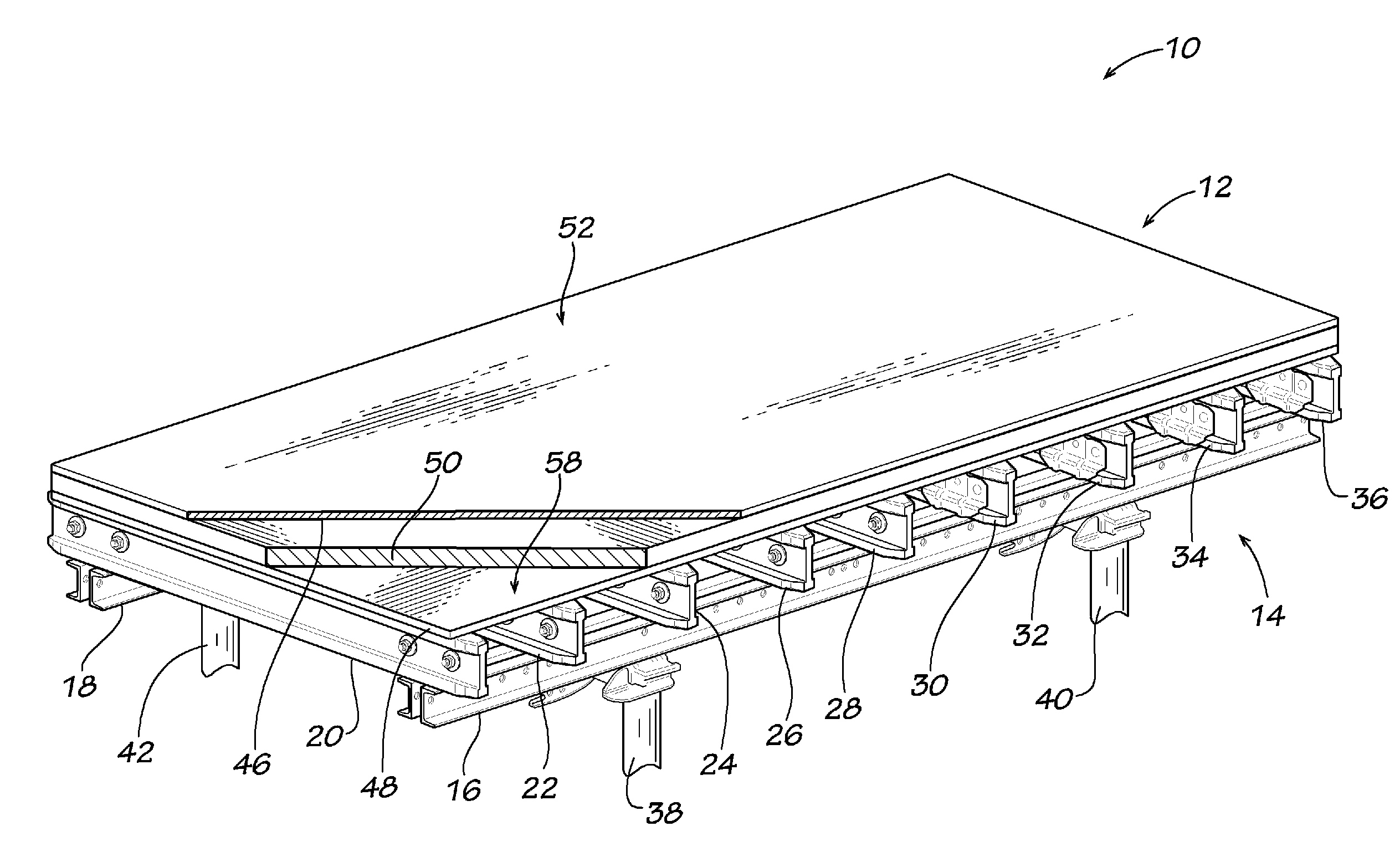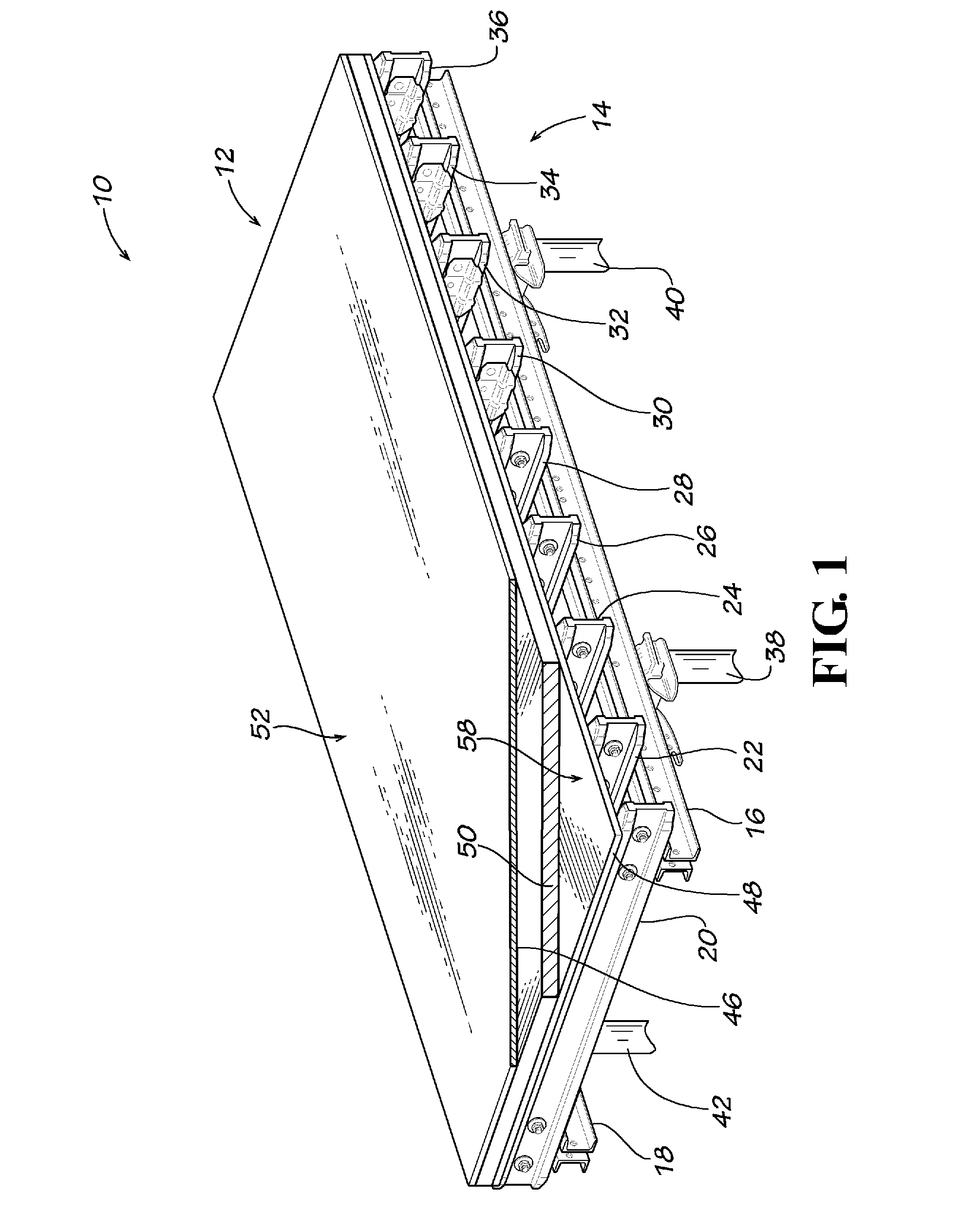Insulated flying table concrete form, electrically heated flying table concrete form and method of accelerating concrete curing using same
- Summary
- Abstract
- Description
- Claims
- Application Information
AI Technical Summary
Benefits of technology
Problems solved by technology
Method used
Image
Examples
Embodiment Construction
[0052]Referring now to the drawing in which like numbers indicate like elements throughout the several views, there is shown in FIG. 1 an insulated flying table form 10 in accordance with the present invention. The insulated flying table form 10 comprises a rectangular concrete forming deck 12 and a deck support structure 14. The deck support structure comprises a pair of elongate, longitudinally extending beams 16, 18 that are laterally spaced from each other. The beams 16, 18 are sometimes referred to as the top chord. The deck support structure also comprises a plurality of elongate, transversely extending support beams 20, 22, 24, 26, 28, 30, 32, 34, 36. The support beams 20-36 are attached to the top chord beams 16, 18 by any suitable means known in the prior art, such as by bolting. The deck 12 is attached to the support beams 20-36 by any suitable means known in the prior art, such as by bolding or nailing. The top chord beams 16, 18 are attached to a plurality of adjustable ...
PUM
| Property | Measurement | Unit |
|---|---|---|
| Thermal properties | aaaaa | aaaaa |
Abstract
Description
Claims
Application Information
 Login to View More
Login to View More - R&D
- Intellectual Property
- Life Sciences
- Materials
- Tech Scout
- Unparalleled Data Quality
- Higher Quality Content
- 60% Fewer Hallucinations
Browse by: Latest US Patents, China's latest patents, Technical Efficacy Thesaurus, Application Domain, Technology Topic, Popular Technical Reports.
© 2025 PatSnap. All rights reserved.Legal|Privacy policy|Modern Slavery Act Transparency Statement|Sitemap|About US| Contact US: help@patsnap.com



